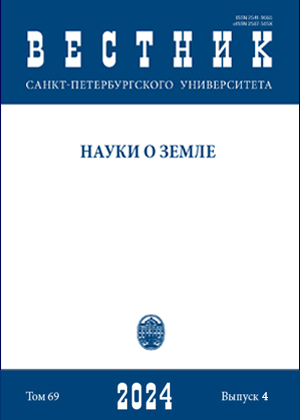Assessment of transport network provision in the regions of the North-Eastern Caucasus for recreation and tourism purposes
DOI:
https://doi.org/10.21638/spbu07.2024.402Abstract
The purpose of this paper is to assess the level of transport network provision in the regions of the North-Eastern Caucasus for the development of recreation and tourism. The important role of transport infrastructure in the effective development of the tourism industry in the works of domestic and foreign scientists has been substantiated. The assessment of the availability of transportation routes in the regions of the North-Eastern Caucasus by means of calculations of indicators of the density of communication routes, Engel and Goltz coefficients revealed the lowest values in Dagestan, and the highest values were obtained for Ingushetia. The Chechen Republic demonstrates an average level of transport network development among the subjects of the North Caucasus Federal District. Using the QGIS geographic information system, the density of the road network was calculated. On the basis of the obtained calculations, a typology of municipal districts of the North-Eastern Caucasus was carried out and a map was constructed. There are five groups of districts according to the provision of transportation network - from low to high. The areas with the most developed transportation network account for only 10% of the study area. Most of the territory of this region (67%) is poorly provided with transportation network. These areas are located in the mountainous zone in the south of the region and in the vast semi-desert zone in the north. The problem of road network provision is especially acute in high mountainous areas. The transportation development of this territory is associated with significant difficulties due physical and geographical conditions. These areas have an important tourist and recreational significance as there are unique natural and cultural heritage sites, including specially protected natural areas. In recent years, there has been a positive dynamic of tourist flows to the studied regions. In order to maintain the current trends and development of domestic and international tourism, the authors recommend the modernization of transport infrastructure, especially in mountainous and high-mountainous areas where there is a significant tourism and recreational potential. This will have a significant social and economic effect for the North-East Caucasus. The results of the study can be used for planning the development of transport systems and for the development of regional transport strategies in the North-Eastern Caucasus.
Keywords:
transport network, mountain regions, infrastructure, North-Eastern Caucasus, tourism, recreation
Downloads
References
Downloads
Published
How to Cite
Issue
Section
License
Articles of "Vestnik of Saint Petersburg University. Earth Sciences" are open access distributed under the terms of the License Agreement with Saint Petersburg State University, which permits to the authors unrestricted distribution and self-archiving free of charge.






